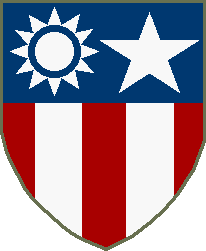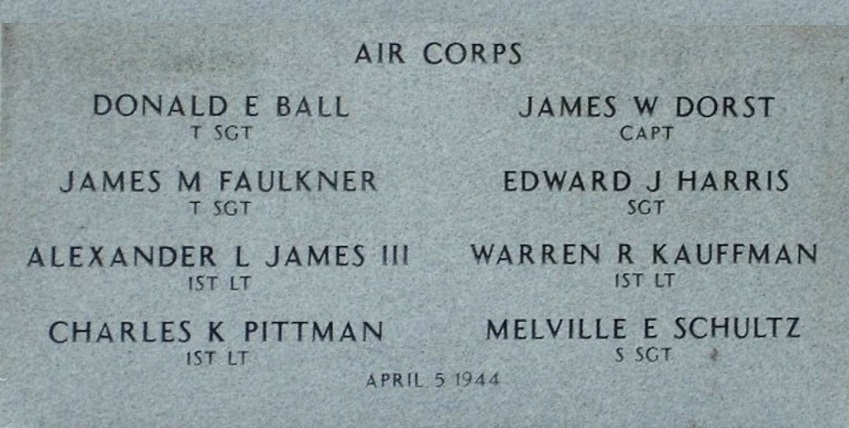

|

|
|
Donald Edward Ball was born December 4, 1916, in Saugatuck, Connecticut to John Henry Bell and Anna England. John was a machine operator in a local twine factory while Anna managed the household. They had married in 1907 in Manhattan, New York, when John was 20 years old and Anna was 18.
Donald’s great grandparents had immigrated to New York from Ireland prior to 1850, and his grandfather moved his family to Connecticut around 1890. Anna’s widowed mother Elizabeth had moved from New York to live with them, and was there at the time of Donald’s birth.
John and Anna Ball had five children: John Everett (b1908), Thomas Robert (1911), Donald Edward, Harold Francis (1916), and Robert Vincent (1923). The family lived in rented homes in Westport as their father changed employment from a factory laborer to a truck driver for a lumber company by 1940. After graduating high school, Donald obtained a job in a retail grocery store as a clerk.
On October 16, 1940, 23-year-old Donald joined thousands of young American men in registering for the US armed forces draft on its first day. The 5’10’, 173 lb young man with blonde hair and blue eyes was working at the Gristede Brothers grocery store in Westport at the time.
At the age of 24, Donald married Angelina Florence Carusone, also a resident of Westport, on May 24, 1941. Angelina, whose parents had immigrated to the US from Italy, was a high school graduate and employed as a machine operator in dye manufacturing.
The following year, Donald decided to enlist in the US Army, and did so on August 6, 1942. He was assigned for training in the US Army Air Corps, where he would become competent in aircraft communications and qualified as a radio operator in B-24 Liberator bombers. He was promoted to Technical Sergeant and transferred overseas assigned to the 9th Bomb Squadron (BS) of the 7th Bomb Group (BG) in the 10th Air Force.
The 7th BG had been sent to India in 1942 to assist Allied forces in thwarting the ambitions of the Japanese Empire in southeast Asia. Operations were directed primarily against the Japanese in Burma, with attacks on airfields, fuel and supply dumps, locomotive works, railways, bridges, docks, warehouses, shipping, and other targets. They also bombed oil refineries and railways in Thailand, hit power plants in China, attacked enemy shipping in the Andaman Sea, and ferried gasoline over the Himalayas to China. Originally equipped with B-17 Flying Fortress heavy bombers and B-25 Mitchell medium bombers, eventually B-24 Liberator bombers were added as the 7th BG’s primary fighting weapon. By 1944, the group was operating primarily out of its base in Pandaveswar Airfield, West Bengal State, India..
On April 5, 1944, T/Sgt Donald E. Ball joined a crew with 10 others in B-24J #42-73435 as the radio operator on a 3-aircraft mission against a Japanese target, a stretch of the Burma-Siam railway. It was also known as the Death Railway due to the use of slave labor and prisoners of war by the Japanese for its construction through the mountains and jungles. The Japanese used the railway to transport troops and supplies in the prosecution of their Burma campaign. The target, along railway miles # 44 and 61, was on the southern leg of Burma near the border with Thailand, at 15° 32’ N, 98° 07’ E. Each aircraft was to drop its bombs individually.
B-24J #42-73435 was the last of the three aircraft to approach the railway for the low altitude bomb run. A B-24 may appear formidable from the ground, but it is a large, slow target when flying at an altitude of only 200 ft and following behind two others along the same course.
At about 1700 hrs and after dropping two of its bombs, the aircraft was struck by machine gun fire from atop a water tower. It climbed to 1500 ft when it exploded and crashed to the ground about 30 miles east of Ye, Burma. Four crew members bailed out of the plane prior to the crash. Seven perished in the crash. No search and rescue missions were launched.
Radio Operator T/Sgt Donald E Ball was last seen on the flight deck by surviving crew members trying to transmit the aircraft’s position.

|
The remains of the eight crew members of B-24J #42-73435 Killed In Action were eventually recovered and buried in a military cemetery in India. They were subsequently brought to the U.S. under the Return of the War Dead program and interred in a shared grave at Arlington National Cemetery, Arlington Virginia.
Of the four crew members who bailed out, three were captured and imprisoned by the Japanese. Of these POW’s, two were eventually liberated by Allied forces, and one died while in prison camp.
This story is part of the Stories Behind the Stars project (see http://www.storiesbehindthestars.org). This is a national effort of volunteers to write the stories of all 421,000+ of the U.S. WW II fallen saved on Together We Served and Fold3. Can you help write these stories? These stories will be accessible via smartphone app at any war memorial or cemetery.
Thanks to John Turanin for providing the information contained on this page. If you noticed anything erroneous or have additional information to contribute to it, please contact jjturanin@gmail.com.
All sources are documented in this Ancestry Public Profile and Family Tree (Membership required)
|